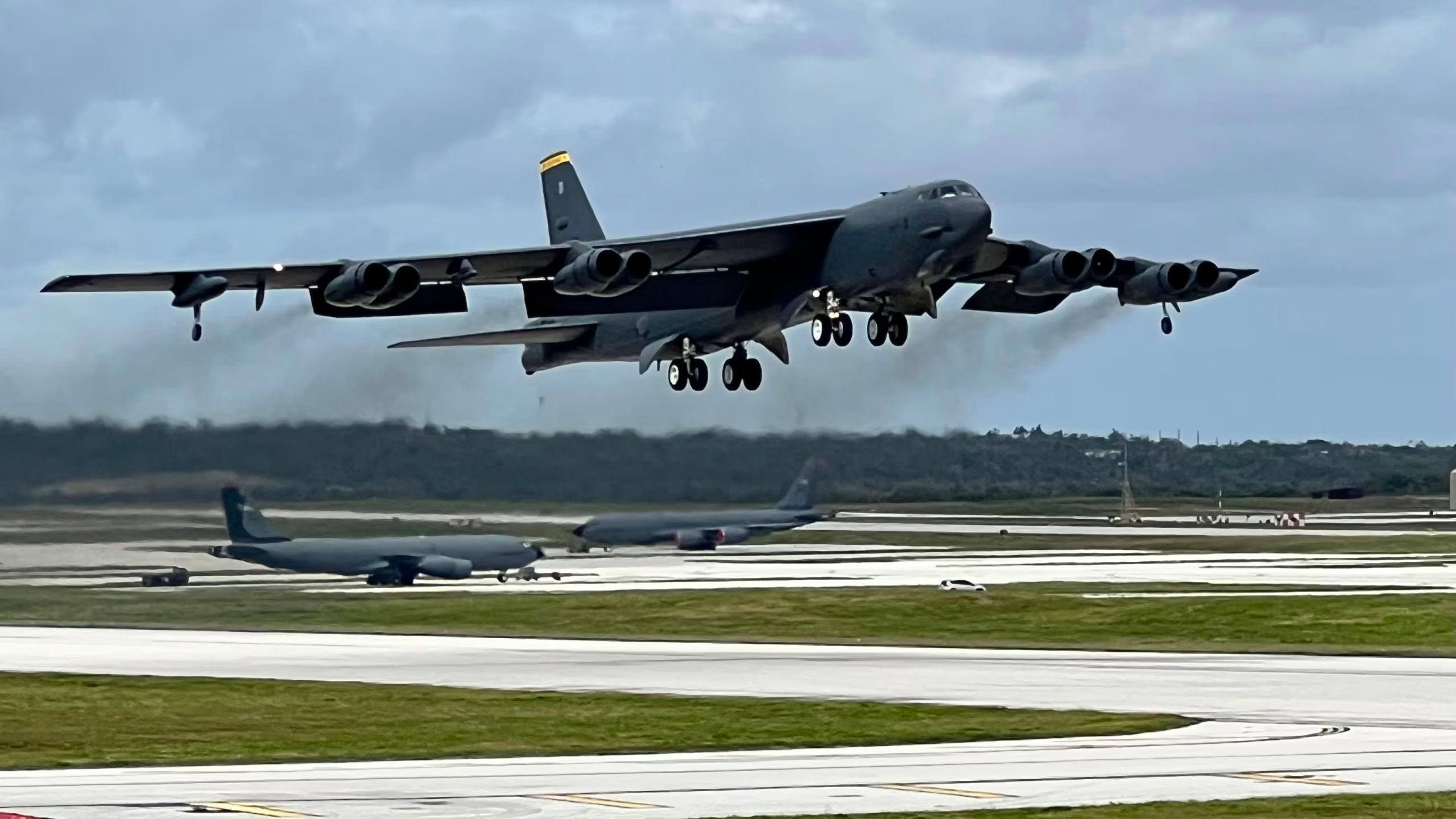NOTE: Watch the video footage at the end of the article.
On July 18, passengers aboard SkyWest Airlines Flight 3788, operating as a Delta Connection flight from Minneapolis to Minot, North Dakota, experienced a tense and unexpected moment when their plane was forced to take evasive action to avoid a U.S. Air Force B-52 Stratofortress. The incident, which unfolded during the aircraft’s approach to Minot International Airport, has sparked widespread attention after audio from the cockpit was shared on social media, capturing the pilot’s explanation to concerned passengers.
Flight 3788, an Embraer E175, was approaching Minot when it suddenly encountered the bomber, assigned to Minot Air Force Base, on a converging flight path. The pilot quickly decided to perform a go-around maneuver — aborting the initial landing attempt — to maintain a safe distance from the military aircraft. Following this, the commercial jet circled the airport several times before finally landing safely.
A spokesperson for SkyWest Airlines provided a statement to FOX Business confirming the incident: “SkyWest flight 3788, operating as Delta Connection from Minneapolis, Minnesota to Minot, North Dakota on July 18, landed safely in Minot after being cleared for approach by the tower but performed a go-around when another aircraft became visible in their flight path. We are investigating the incident.”
What has drawn particular attention is the pilot’s candid communication with passengers shortly after the maneuver, captured in an audio recording that quickly went viral. The pilot acknowledged the abrupt nature of the maneuver and apologized for any alarm it caused.
“Given his speed … I don’t know how fast they were going, but they were a lot faster than us. I felt it was the safest thing to do to turn behind it,” the pilot said. “So sorry about the aggressive maneuver. It caught me by surprise. This is not normal at all. I don’t know why they didn’t give us a heads-up, because the Air Force base does have radar … long story short, it was not fun, but I do apologize for it, and thank you for understanding. Not a fun day at work.”
Passengers described the experience as unsettling but noted the calm professionalism exhibited by the flight crew and their fellow travelers. Monica Green, a passenger seated near the front, told local news outlet KFYR that despite the hard turn, the cabin remained unusually composed.
“Honestly, everyone was weirdly calm,” Green said. “I felt like I was gaslighting myself, like maybe I was being crazy, because no one else was reacting. We took a really hard turn, and that’s when the pilot got on the intercom and said, ‘Sorry everybody, I’ll explain everything when we land safely.’ The way he said it, it almost sounded like he was insinuating that landing safely might not be an option for a moment. We all just kind of looked at each other and stayed quiet.”
Green admitted to feeling anxious during the ordeal and texted her husband to express her unease. “I texted my husband saying, ‘this is weird, we keep circling the airport, but we’re not landing.’ I was a little anxious, and when he said, ‘no, this is serious,’ I started to panic internally,” she said. Despite her fears, she commended the pilot’s transparency and effort to keep passengers informed throughout.
Minot Air Force Base, located near the incident site, is home to the 5th Bomb Wing and the 91st Missile Wing, both of which operate strategic assets including B-52 bombers. The airspace around military installations is known to be tightly controlled, but incidents like this highlight the potential challenges and risks when military and civilian flights operate in close proximity.
The U.S. Air Force and Minot Air Force Base have not yet commented publicly on the event. Meanwhile, SkyWest confirmed that their investigation is ongoing, emphasizing the safe landing of the flight and the priority placed on passenger safety.
This incident serves as a reminder of the complexities involved in coordinating air traffic near military facilities and the importance of clear communication to prevent potentially dangerous situations.
PLAY:

Sarah Mitchell is a bestselling novelist recognized for her insightful and emotionally resonant stories that explore the complexities of human relationships. Originally from Denver, Colorado, Sarah grew up in a family of teachers who nurtured her curiosity and love for storytelling. She studied psychology at Stanford University, where she became fascinated by the intricacies of human behavior—an interest that would later shape her writing career. Sarah’s novels are praised for their nuanced characters, intricate plots, and ability to capture the subtle tensions that define love, friendship, and family ties. Her breakthrough novel, The Spaces Between Us, became an instant bestseller, lauded for its honest portrayal of strained family relationships and the fragile bonds that hold people together. Since then, she has published several works that continue to captivate audiences around the world. Outside of her writing career, Sarah is passionate about mental health advocacy and often partners with organizations to promote awareness and support for those struggling with emotional well-being. Her personal life is quieter—she enjoys hiking in the Colorado mountains, practicing yoga, and spending time with close friends. With each new book, Sarah Mitchell cements her reputation as a writer who illuminates the beauty and struggles of human connection.









